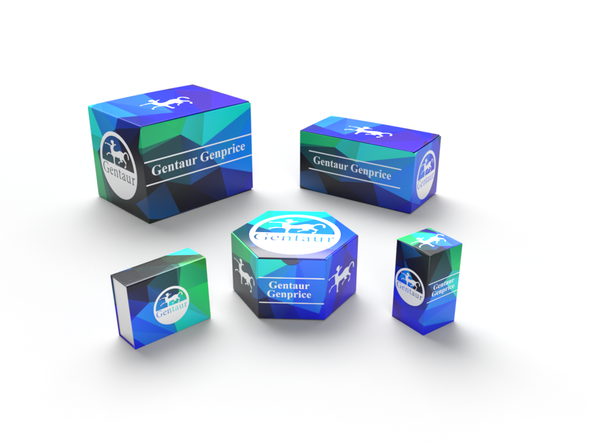Description
Activin A Receptor Type IC Antibody | 62-664 | Gentaur UK, US & Europe Distribution
Host: Rabbit
Reactivity: Human
Homology: Predicted species reactivity based on immunogen sequence: Mouse
Immunogen: This Activin A Receptor Type IC (ACVR1C) antibody is generated from rabbits immunized with a KLH conjugated synthetic peptide between 33-62 amino acids from the N-terminal region of human Activin A Receptor Type IC (ACVR1C) .
Research Area: Cancer, Signal Transduction
Tested Application: WB, IHC-P
Application: For WB starting dilution is: 1:1000
For IHC-P starting dilution is: 1:50~100
Specificiy: N/A
Positive Control 1: N/A
Positive Control 2: N/A
Positive Control 3: N/A
Positive Control 4: N/A
Positive Control 5: N/A
Positive Control 6: N/A
Molecular Weight: 55 kDa
Validation: N/A
Isoform: N/A
Purification: This antibody is prepared by Saturated Ammonium Sulfate (SAS) precipitation followed by dialysis
Clonality: Polyclonal
Clone: N/A
Isotype: Rabbit Ig
Conjugate: Unconjugated
Physical State: Liquid
Buffer: Supplied in PBS with 0.09% (W/V) sodium azide.
Concentration: batch dependent
Storage Condition: Store at 4˚C for three months and -20˚C, stable for up to one year. As with all antibodies care should be taken to avoid repeated freeze thaw cycles. Antibodies should not be exposed to prolonged high temperatures.
Alternate Name: Activin receptor type-1C, Activin receptor type IC, ACTR-IC, Activin receptor-like kinase 7, ALK-7, ACVR1C (HGNC:18123)
User Note: Optimal dilutions for each application to be determined by the researcher.
BACKGROUND: ACVR1C, a serine/threonine protein kinase, is a type I receptor for the TGFB family of signaling molecules. The receptor complex consisting of 2 type II and 2 type I transmembrane serine/threonine kinases. Type II receptors phosphorylate and activate type I receptors which autophosphorylate, then bind and activate SMAD transcriptional regulators, SMAD2 and SMAD3, which then translocate to the nucleus and interact directly with DNA or in complex with other transcription factors. ACVR1C is a receptor for activin AB, activin B and NODAL. This protein plays a role in cell differentiation, growth arrest and apoptosis.




![Activin A Receptor Type IC (ACVR1C) Antibody (N-term A48) [APR32375G] Activin A Receptor Type IC (ACVR1C) Antibody (N-term A48) [APR32375G]](https://cdn11.bigcommerce.com/s-1rdwiq712m/images/stencil/590x590/products/63518/63822/gentaur-genprice__26005.1661610467__29809.1661628092__75433.1661676199__77988.1661684280__64362.1661692443__31856.1661866867.png?c=1)

